BYD Seal (2023) Review – Budget Porsche Taycan?
Brief history lesson
Before we tell you all about the BYD Seal, let’s first talk to you about BYD. Because you may have never heard of the Chinese brand, which has only recently started operating in the Netherlands. In a nutshell, BYD is one of the largest automakers in the world. It not only makes cars – for 20 years – but also batteries. In fact, it is the third largest battery manufacturer in the world. It has been selling three of its own models in the Netherlands since the end of 2022: the Atto 3, a compact SUV; the Tang, a seven-seat SUV; and the Han, a sporty sedan.
BYD Seal
Now they are joined by the Dolphin – a compact hatchback – and the Seal. In Spain, we were allowed to get a taste of both models. The Seal will compete in Europe against the Tesla Model 3, BMW i4 and Nio ET5. The model you see above in the video comes straight from China. It will probably undergo some minor modifications for the European market.
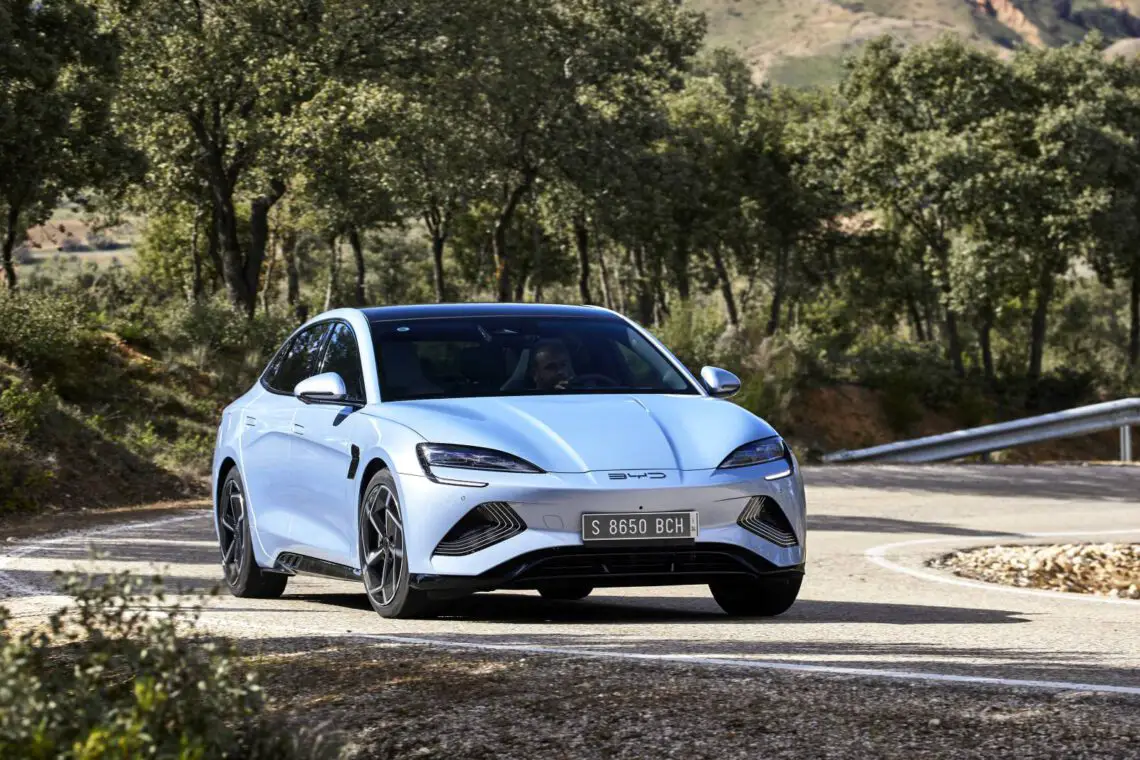
Sports sedan
The Seal is a classic sports sedan, with an elongated hood and a short butt. Like the Dolphin, it is part of BYD’s Ocean series. So the theme of the car is the ocean. The theme is reflected in the design in the form of whiskers of a seal (the black areas me white lights in the front bumper), gills next to the wheel arches and a kind of scaly texture on the sills. Sounds childish, but it’s done fairly subtly and tastefully, if you ask us. The Taycan-like headlights provide a sporty edge.
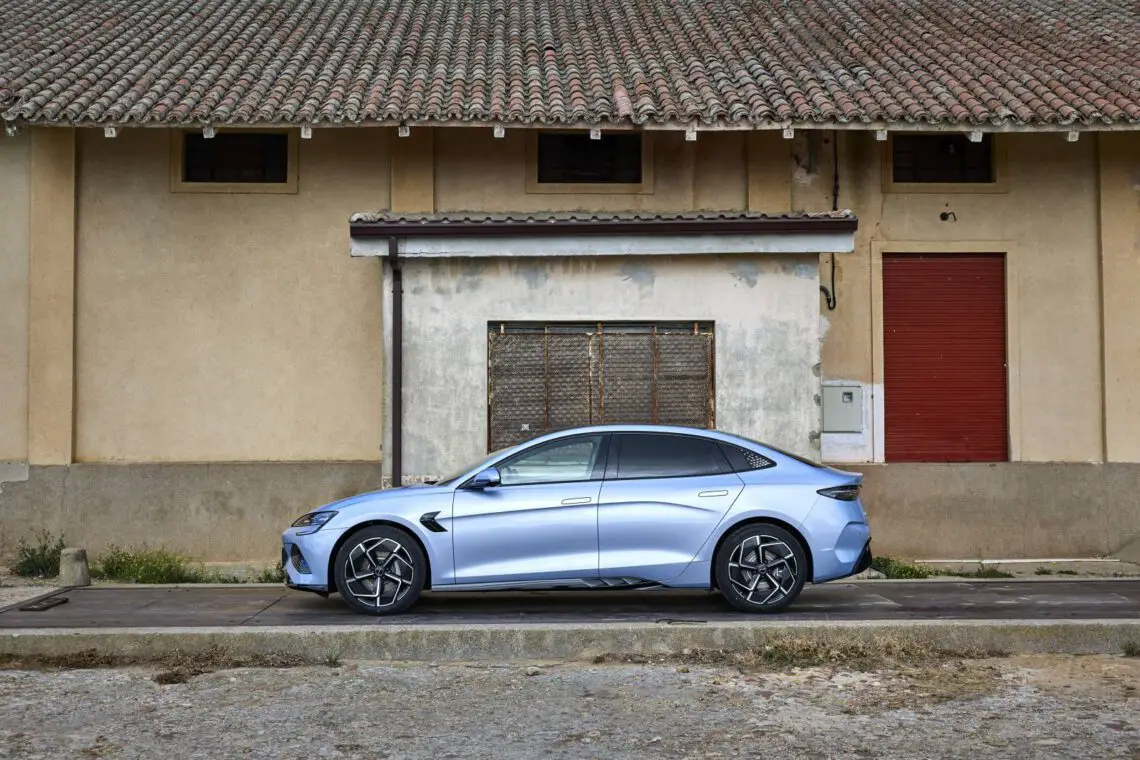
Range
BYD will supply the Seal in Europe for now only with an 82 kWh battery pack, which can have up to 150 kW of charging power at a fast charger. In the rear-wheel-drive version, it provides 570 kilometers of WLTP range. In the all-wheel drive version, you sacrifice 50 kilometers of range. Like every BYD, the SEAL has a cobalt-free lithium iron phosphate battery. BYD is extremely proud of this battery and calls it the Blade Battery. According to the brand, the battery is extra safe and has a long life. In addition, the Blade Battery’s compact size provides plenty of interior space. After all, it is nice and flat.
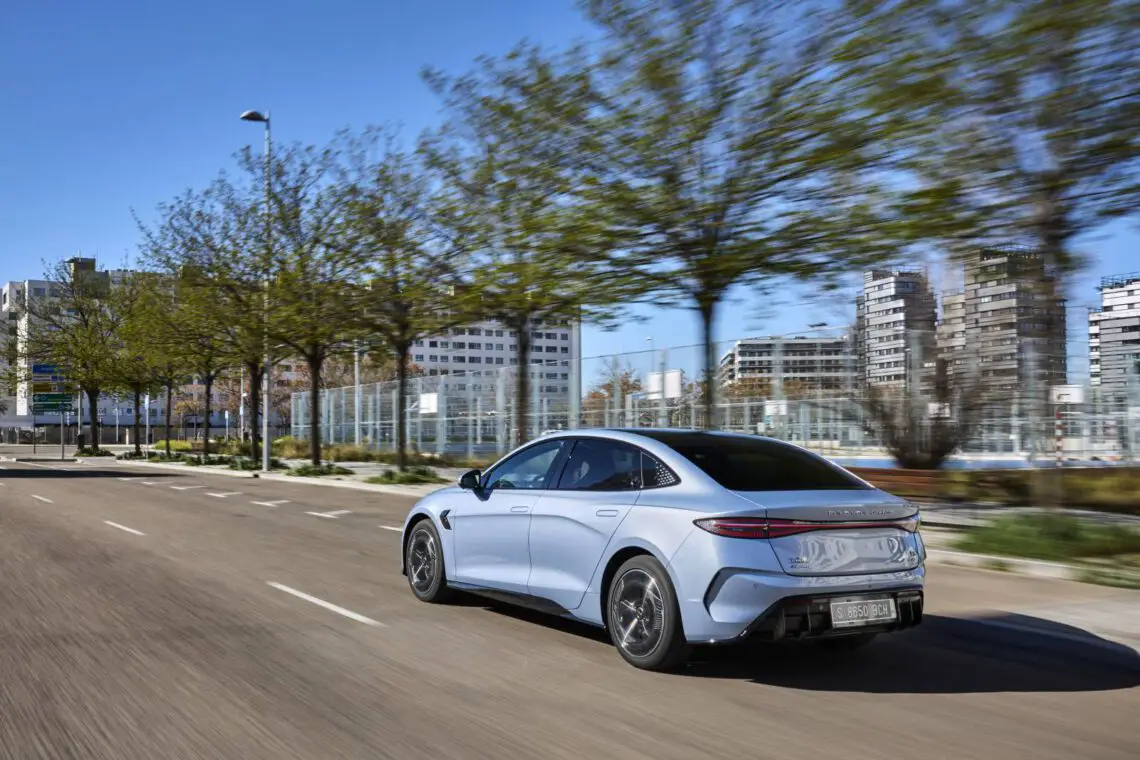
Cell-to-Body
In addition, the Blade Battery provides additional safety. This is because the battery is fully integrated into the structure of the car, making the body much stiffer. BYD calls this Cell-to-Body technology. With CTB technology, the battery and the traditional floor of the car together form a sandwich structure that integrates the battery and the battery holder.
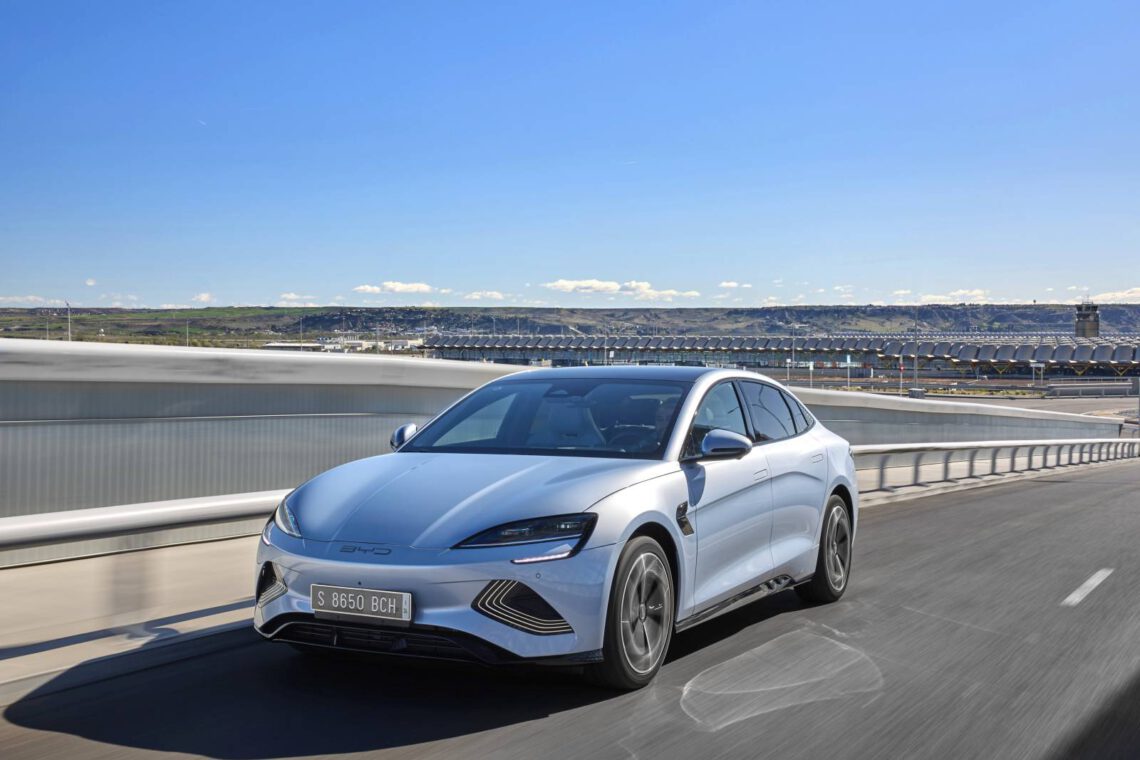
3.8S
The Seal looks smooth and it is. The entry-level – the rear-wheel-drive version – already boasts 313 horsepower. The AWD version tops that off with 530 horsepower. In Spain, we got to briefly drive the Seal on a closed circuit and launch it on the straight several times. Effortlessly rocketing from standstill to 100 km/h in 3.8 seconds. Nice detail: on the Seal’s butt it says “3.8S” under the model designation. The Chinese are not yet sure if this reference to the 0-100 time will make it to the production model coming to Europe. We say: good riddance!
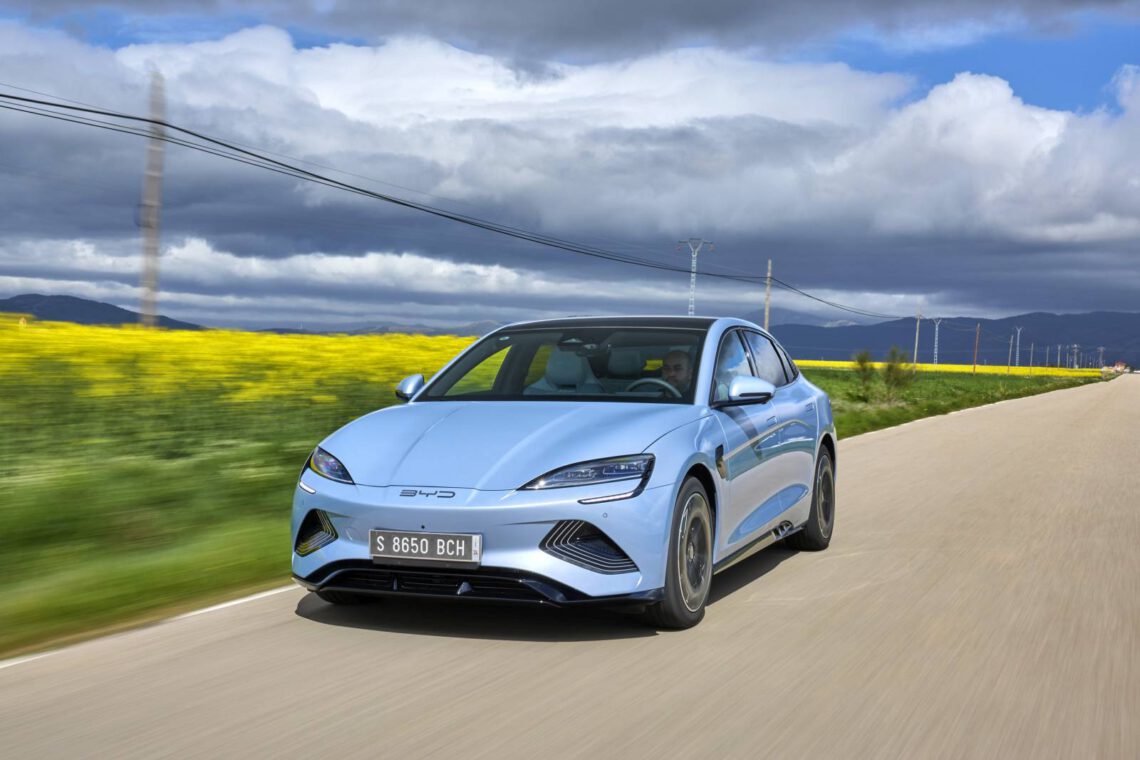
Special infotainment screen
The nautical theme continues in the interior. It is characterized by many wavy lines, for example around the vents. The Seal’s handlebars have three spokes and a flat bottom, almost resembling the tail and fins of a fish. All interior attention goes to the large 15.6-inch infotainment screen. With the push of a button, the entire screen can rotate 90 degrees and suddenly stand upright. A nice trick, which we already know from other BYD models.

Luggage space BYD Seal
In the second row of seats, there is reasonable legroom. We don’t look at that. Chinese love legroom. If you have success in your life, then a car with lots of legroom is the first thing you buy. Luggage space is somewhat less important to them, and you notice that in the Seal. There is only room for about 400 liters of goodies. Enough for weekly shopping, but it gets crammed when you take the whole family on vacation to southern Europe. Fortunately, you can store some things in the frunk – a storage space under the hood. From children whining in the back because their gadget’s battery is dead, you won’t be bothered. All the charging options they need are there. There is not only a USB-A and USB-C charging point, but even a full household outlet.
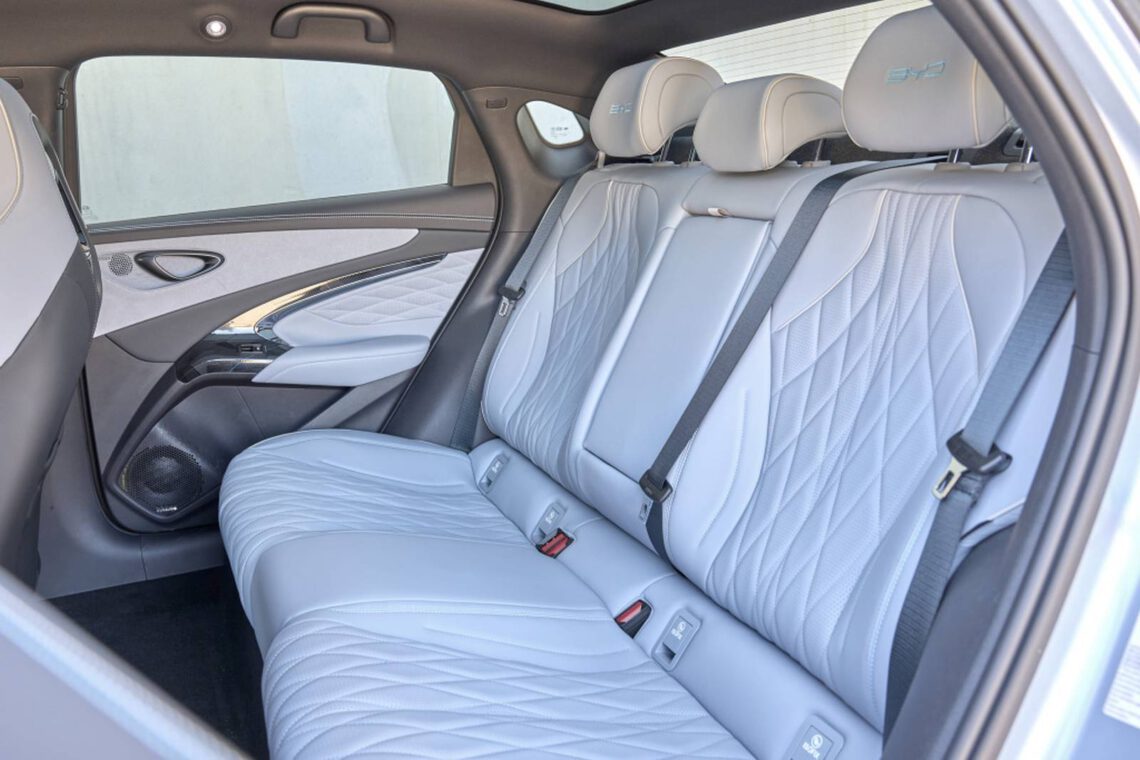
When is he coming to the Netherlands?
The Seal is coming to the Netherlands in the fourth quarter of this year. More information on specifications and final pricing will be announced prior to the official launch of the BYD SEAL.
All specifications at a glance:
| General Specifications BYD SEAL (82 kWh) | |
| Dimensions (L/B/H) | 4,800/1,875/1,460 mm |
| Wheelbase | 2,920 mm |
| Drive | Rear-wheel drive and all-wheel drive |
| Top speed | 180 km/h |
| Engine power eight-wheel drive | 230 kW/313 hp |
| Engine power all-wheel drive | 390 kW/530 hp |
| Acceleration 0-100km/h rear-wheel drive | 5.9 sec |
| Acceleration 0-100km/h four-wheel drive | 3,8 s |
| Wheels | 19 inches |
| Electric range rear-wheel drive | 570 km (WLTP combined) |
| Electric range all-wheel drive | 520 km (WLTP combined) |
| Luggage volume | 402 liters + 53 liters frunk |
| Number of seats | 5 |
| Battery | BYD Blade Battery (LFP) |
| Battery capacity | 82 kWh |
| Load capacity | 150 kW DC 11 kW AC (3-phase) |
| DC charging time 30-80% | 26 minutes |
| Heat pump | Standard |
| V2L function | Standard |

